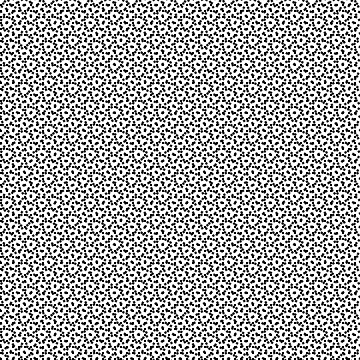
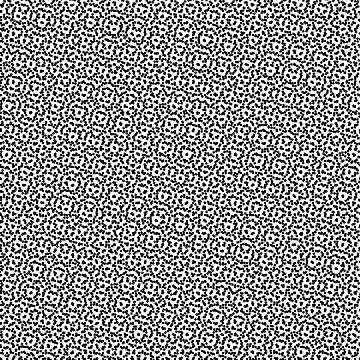
 |
 |
The best-known of all printing moiré problems arises because of the need to add a fourth screen at a 15 degree angle after all possible 30 degree angles have been used by the CMK separations, as shown above. This moiré, which is familiar to all press people, is shown even more clearly by isolating two screens at 15 degrees to each other here;
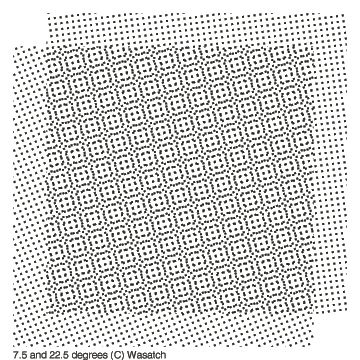
Since the invention of FM halftoning, it has become common in many high-end print shops to simply substitute an FM screen for the offending yellow plate, as shown below.
 |
 |
 |
 |
Prints made with these separations exhibit the rosette structure that print buyers expect, while using stochastic screening to completely eliminate the cause of most complaints regarding moiré. This well-proven method actually makes the moiré pattern shown above impossible.
The Precision Rosette/Stochastic Hybrid Screens feature is only available with SoftRIP SP for Separations Printing.
Select Wasatch Precision Rosette Screens as your halftone method and click on the Halftone Properties button to launch the 'Wasatch Precision Rosettes Screens Properties' window.

Pressing the Rosette/Stochastic Hybrid button launches the following window.
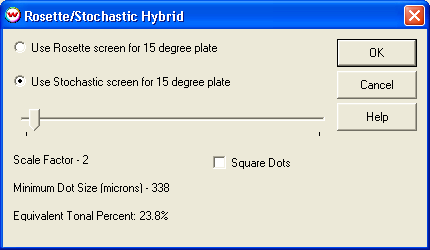
To use the hybrid screening method, check the "Use Stochastic screen for 15 degree plate" option. Use the slider switch to specify dot size for the stochastic screen.
The Equivalent Tonal Percent display aids you in selecting an appropriate dot size. Set it to the lowest tonal percent you can reliably hold on press. Most printers will want to set Equivalent Tonal Percent somewhere between 5% and 25%.
Equivalent Tonal Percent is the tonal percent which, for the current rosette screen, has a dot size roughly equal to that of the current setting of Minimum Dot Size for the stochastic screen. Minimum dot size in this window is actually determined by the multiple of the Scale Factor—chosen here and the Scale Factor shown on the parent window. Both are displayed.
The Square Dots control affects the shape of dots formed when dot size is scaled. For devices where dpi is the same horizontally as vertically, this control is grayed out and does nothing. When checked, Square Dots modifies the behavior of the scale slider bar. It computes different scale factors on X and Y to try to keep the scaled-up dots as square as possible for integer scale factors. This prevents "squashed dots" from appearing as dot size is increased on these printers.
The selected stochastic screen will be substituted for the 15-degree separation, and displayed as shown below.
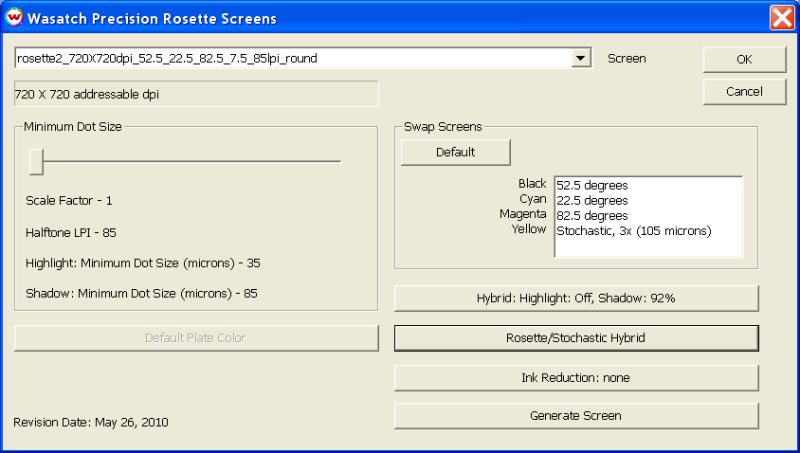
| Online Background Information Learn more about digital halftoning methods by visiting the Wasatch website |